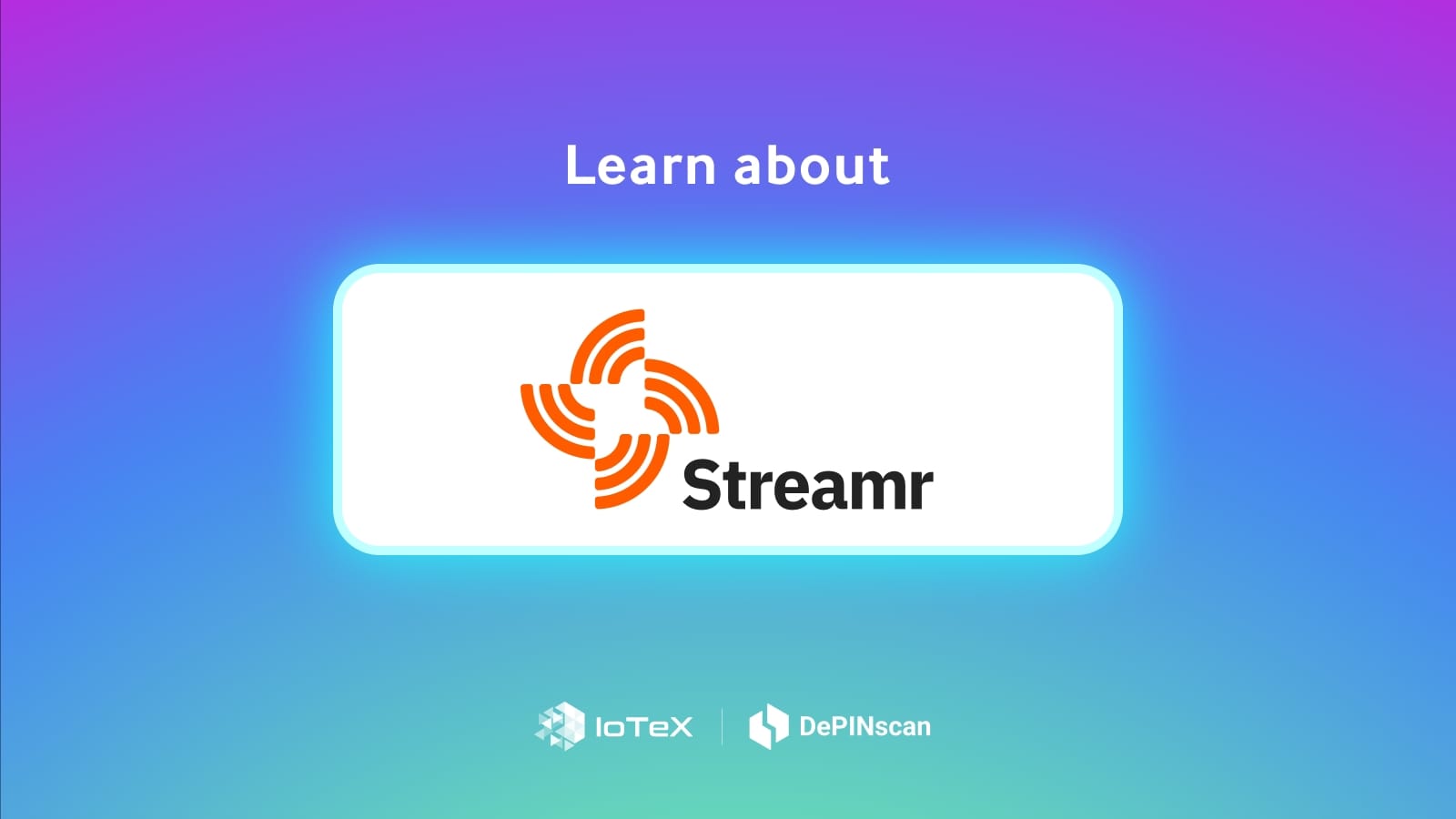DePIN Scan: Learn about Streamr


What is Streamr?
The Streamr Network is redefining real-time data broadcasting for the decentralized web. Streamr is comparable by technical analogy to systems like IPFS and BitTorrent, except with a focus on the seamless flow of live data.
The decentralized, serverless protocol is built for security, speed, and scalability. The secret to its peer-to-peer (P2P) foundation is an open invitation for anyone to participate by running a node to power and secure the network in exchange for $DATA tokens.
This creates a permissionless and neutral network for real-time data broadcasting, extending the capabilities of the underlying internet, without compromising its open and decentralized nature.
What makes Streamr special?
Core to Streamr's appeal is its P2P architecture, removing the need for central servers and avoiding vendor lock-ins and single points of failure. This approach ensures fault tolerance, resistance to attacks, and unlocks massive scalability.
All data in the network is delivered with low latency through streams, entirely off-chain, while access control and incentivization mechanisms are handled on-chain. Privacy and security are paramount, with end-to-end encryption for subscribers and cryptographic signatures to protect data integrity.
Taken together, this creates a decentralized internet backbone that supports data sovereignty, real-time processing, and robust security.
How does Streamr work?
The Streamr tech stack includes the main decentralized pub/sub network for data transmission, node Operators who power the network, the Streamr SDK for seamless integration, and smart contracts in the form of Sponsorships for managing data stream incentives and transactions.
Developers are empowered to build on Streamr, using the SDK to add serverless real-time data functionality into their applications, whether through direct integration or remote connection to nodes. This flexibility opens up endless possibilities for real-time data streaming and processing.
Where is Streamr used?
Applications typically use Streamr for decentralized messaging, for example sharing data across applications or broadcasting real-time state changes to large audiences. However, Streamr can be used by anyone dealing with live media or real-time data at scale.
Let’s consider three emerging use cases: Decentralized Physical Infrastructure Networks (DePIN), decentralized AI, and decentralized video streaming.
DePIN
In DePIN, Streamr can facilitate a shift towards decentralized data exchange among interconnected devices, enabling DePINs to transition from centralized data pipelines to a fully decentralized array of contributors. The Streamr protocol allows DePIN users to transmit data up, across, or down through their network and technology stack.
AI
For AI, Streamr acts as a neutral data layer, offering a transparent, reliable foundation for AI models to interact, share insights, and evolve collectively.
Integrating AI with a decentralized framework can also provide a step towards ensuring AI operations are more open, verifiable, and up to date.
Video streaming
With video streaming, Streamr is testing the limits of peer-to-peer ‘final mile’ content delivery, aiming to decentralize how we consume video content and contribute to the network's efficiency and scalability. The P2P protocol allows viewers to directly contribute to the broadcasting network as they view the content, optimizing efficiency and scalability.
Learn more about Streamr